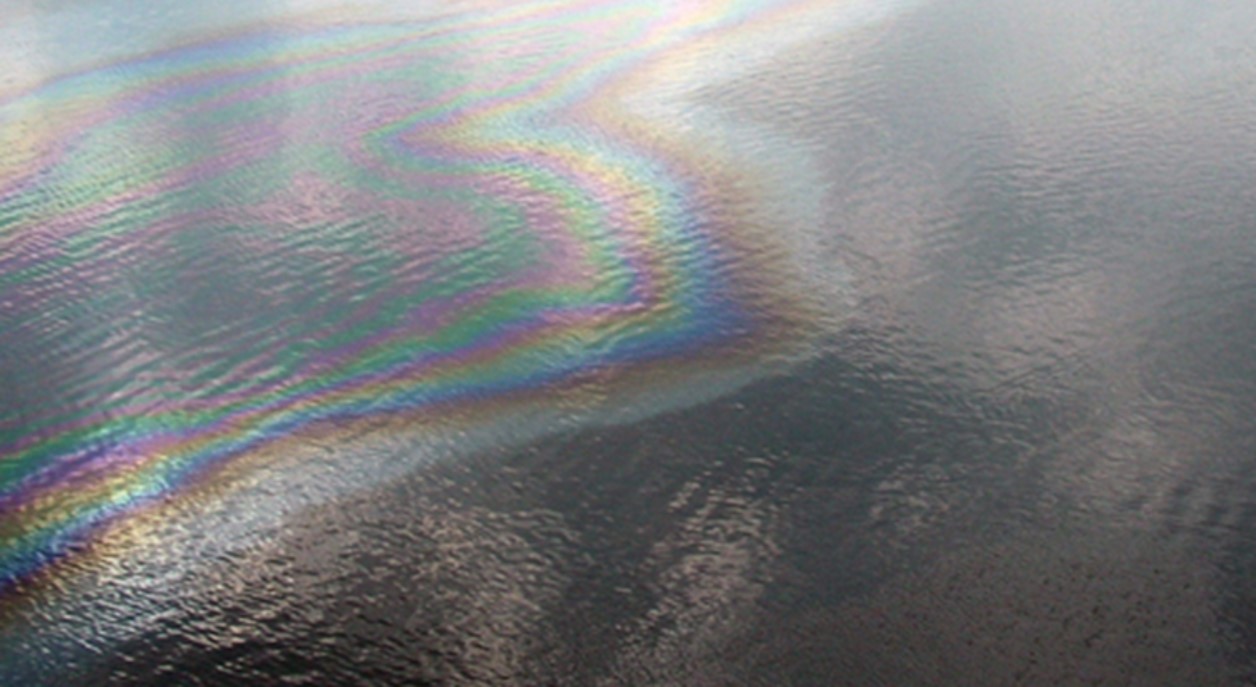
New research co-led by NCCOS scientists shows that oil sheens on the surface of seawater can interfere with the survival and development of larval Eastern oysters, a species commonly located along the Atlantic coast and the Gulf of Mexico — a region with many offshore oil wells, platforms, and pipelines. Larval oysters drift with ocean currents before attaching to the seafloor later in their life cycle, making them vulnerable to oil sheens, which also move with currents.
The study also found that prolonged exposure to ultraviolet (UV) light increased the toxicity of oil sheens for this oyster. In nature, UV light intensity varies with season, cloud cover, position of the sun, and amount of ozone in the atmosphere.
The researchers exposed larval oysters in a laboratory setting to oil sheens of varying thickness, with and without UV light for 24 hours to establish effect thresholds in the larvae. Oil sheen thicknesses used were characteristic of those documented during oil spills. Surviving larvae were then moved to clean seawater to examine delayed effects on survival and swimming behavior.
UV light significantly increased oil sheen toxicity during the 24-hour exposure, and oil exposure continued to result in larval mortalities or impaired swimming 96 hours after transferring larvae to clean seawater. Impaired swimming would leave oyster larvae more vulnerable to predators.
In the U.S., Eastern oyster landings are valued at over $177 million, with Gulf of Mexico states making up roughly 46 percent of this value. Beyond this contribution to the seafood industry, oyster reefs also protect coastal communities from waves, provide habitat for other marine life, and remove excess nutrients from water bodies through filter feeding.
Project findings will inform management of the Eastern oyster fishery and oil spill damage assessments overseen by NOAA’s Office of Response and Restoration.

